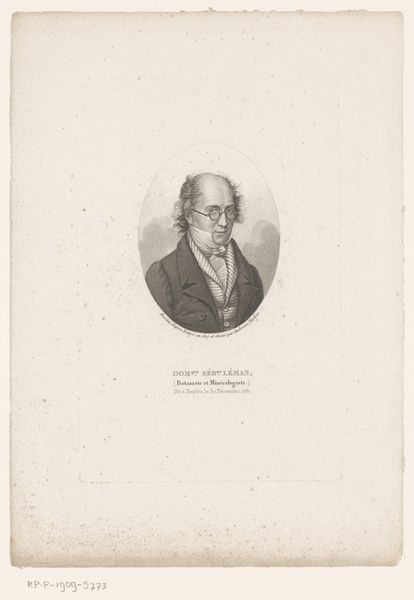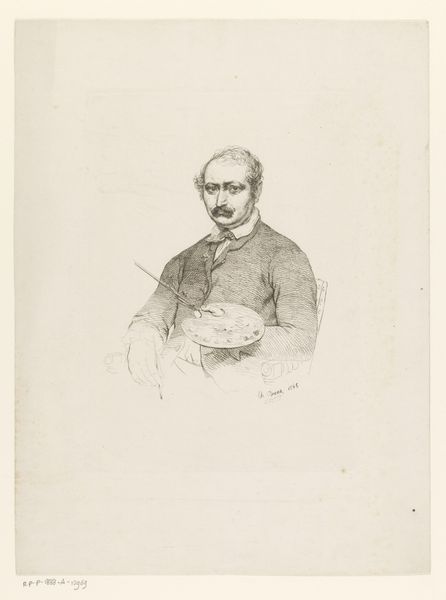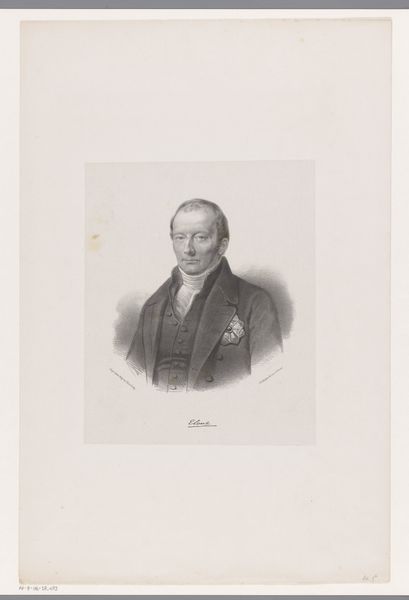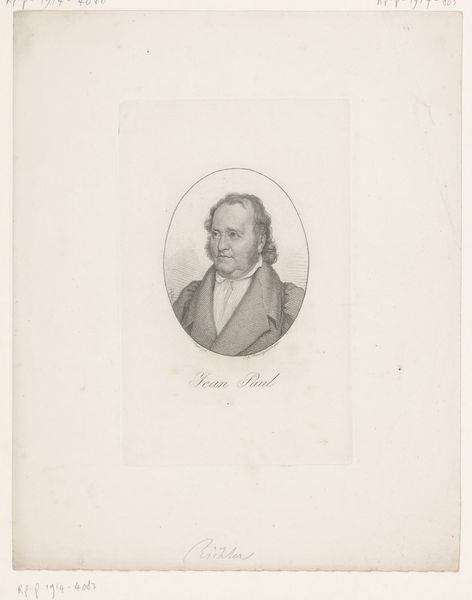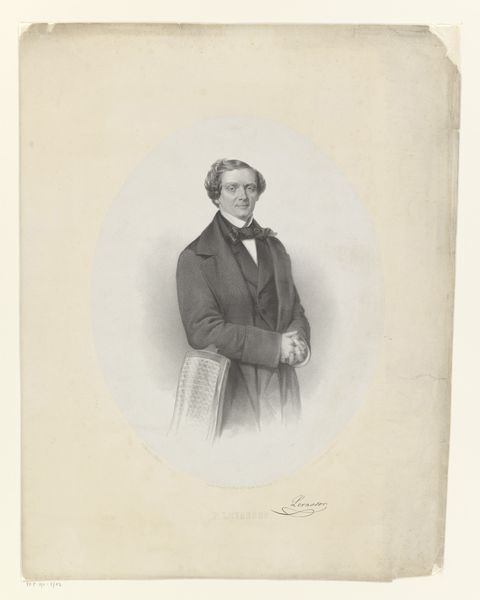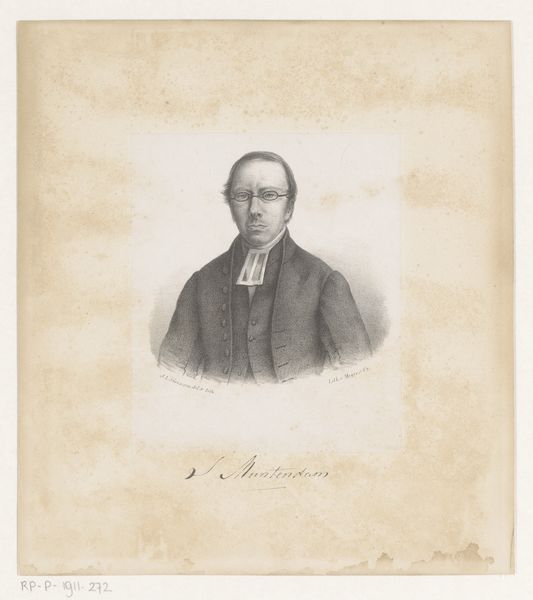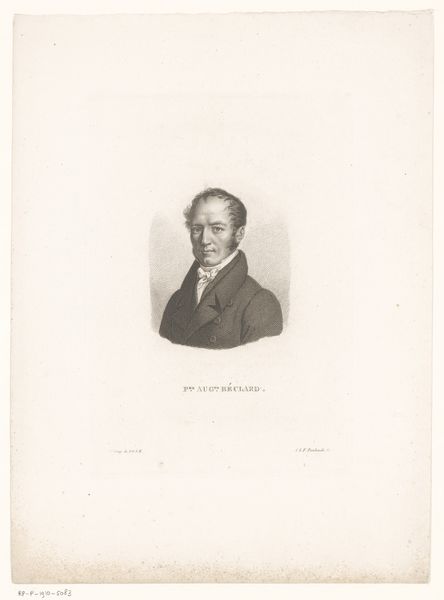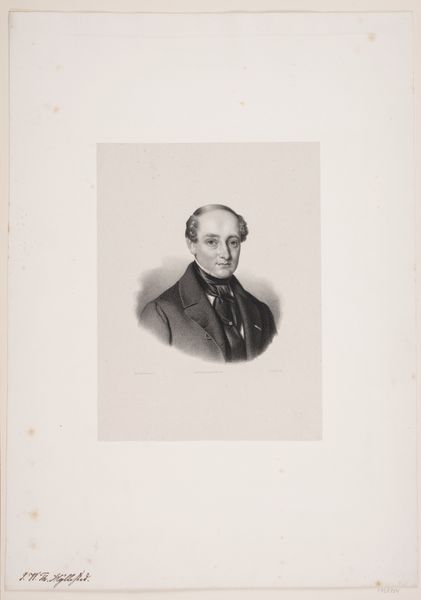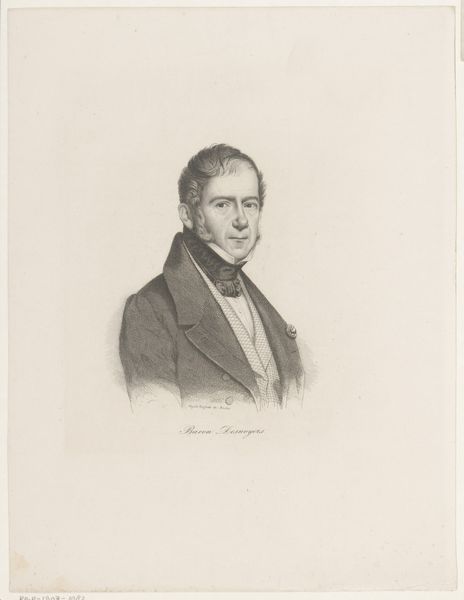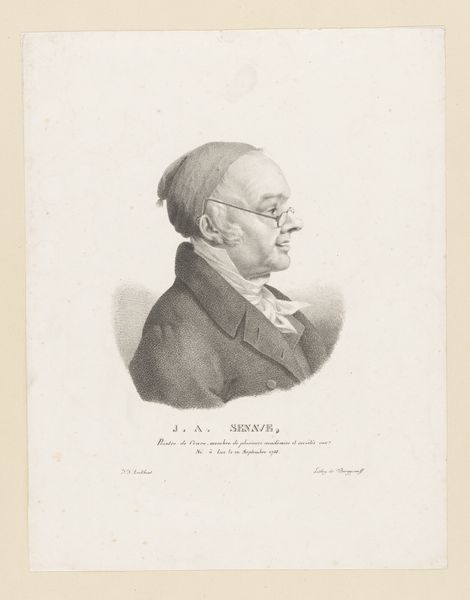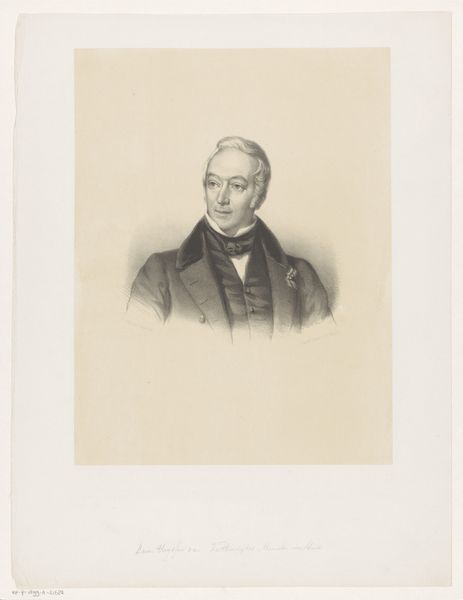
drawing, print, etching, pencil
#
pencil drawn
#
drawing
# print
#
etching
#
pencil sketch
#
charcoal drawing
#
pencil drawing
#
pencil
#
pencil work
#
academic-art
#
realism
Dimensions: height 525 mm, width 370 mm
Copyright: Rijks Museum: Open Domain
Curator: Here at the Rijksmuseum, we have a portrait of Gideon Jeremie Boissevain created sometime between 1824 and 1845 by Henricus Wilhelmus Couwenberg. It’s rendered in etching, print and pencil. What's your first impression? Editor: Stark. There’s an undeniable directness in the subject’s gaze. The greyscale also strips away artifice, presenting what feels like an unembellished truth. Curator: It’s a work that operates within very specific social parameters. Portraiture during that era was often a display of status. The rising middle class commissioned portraits to assert their presence and respectability in society. Editor: Exactly. The very deliberate details in his clothing and demeanor speak to this. Look at the fine rendering of the coat, for example, you see not just texture but hints about tailoring, suggesting a particular level of affluence and craftsmanship. This extends beyond just aesthetics; it becomes a social declaration. Curator: Precisely, Boissevain's family were prominent merchants, and this portrait served to solidify their social standing, creating and reinforcing their image of success. Academic art, during the rise of realism, really spoke to these specific social aspirations and realities. Editor: Let's also think about what pencil as a material might suggest. Pencil enabled a certain level of mass production of images at the time and contributed to the development of print culture. But it's all hand-worked. There’s the direct relationship between artist and subject, with the intimacy of sketching in pencil versus the more industrial feel of printing, for instance. Curator: And Couwenberg was a well-known portraitist, adhering to the popular academic style of the day, depicting people in a way that was considered proper and flattering but that would endure. The art serves the patrons. Editor: Yes. It brings into focus the means by which representation was controlled and consumed at the time, something to bear in mind, still. Curator: Understanding this artwork through the lens of its creation and social use really provides a fascinating insight into that period. Editor: I concur, seeing the interplay between materials, technique, and social status has broadened my appreciation, giving greater historical depth to the artistic skill on display.
Comments
No comments
Be the first to comment and join the conversation on the ultimate creative platform.
